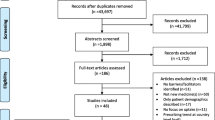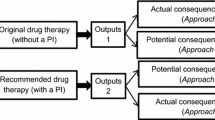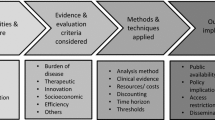Abstract
Objective: To identify the types of information used by health professionals when assessing a new medicine, and to discover whether measures of clinical effectiveness and cost-effectiveness are understood and used.
Method: A cross-sectional survey of 56 health professionals was undertaken in a tertiary hospital in New Zealand. Respondents were consultants, registrars, house-surgeons, pharmacists, and specialist nurses
Main outcome measures: Health professionals’ opinions on clinical and cost information required for assessing a new medicine; their ability to calculate measures of risk; and their ability to define clinical effectiveness, cost-effectiveness and types of economic analysis.
Results: Thirty-four percent of respondents considered journals and research to be the most accurate sources of information when assessing a new medicine. Efficacy, safety, contraindications and side-effects were the most important information sought. In total, 93% gave an acceptable definition of clinical effectiveness, and 38% of cost-effectiveness. The majority of each profession (except specialist nurses) could calculate relative risk reduction (RRR) and absolute risk reduction (ARR) but fewer could calculate numbers needed to treat (NNT). Eighty-four percent of respondents felt that cost affected their assessment of a new medicine. Less than a quarter of respondents could define each type of economic analysis. Consultants and pharmacists appeared to have the best knowledge of economic analysis.
Conclusion: Efficacy, safety, contraindications and side-effects were the most important information sought when assessing a new medicine. Health professionals’ knowledge of clinical effectiveness was greater than their knowledge of cost-effectiveness. Consultants and pharmacists appeared to have the best knowledge of economic analysis.
Similar content being viewed by others

References
R Segal S. Pathak (1988) ArticleTitleFormulary decision making: identifying factors that influence P&T Committee drug evaluations Hosp Formul 23 174–8 Occurrence Handle10286022
LM Weekes C. Brooks (1996) ArticleTitleDrug and therapeutics committees in Australia: expected and actual performance Br J Clin Pharmacol 42 IssueID5 551–7 Occurrence Handle8951185
*Medicines Pharmacy and Industry Group and Nursing and Midwifery Policy Branch. (2003). Supplementary prescribing by nurses and pharmacists within the NHS in England. Department of Health: London, 1–67
S. Gentry (2001) Nurse Prescribing Regulations take effect. Media Release Ministry of Health Wellington
Anon (1998) ArticleTitlePrescribing new drugs in general practice MeRec Bull 9 IssueID6 21–4
P. McGettigan et al. (2001) ArticleTitlePrescribers prefer people. The sources of information used by doctors for prescribing suggest that the medium is more important than the message Br J Clin Pharmacol 51 184–9 Occurrence Handle10.1111/j.1365-2125.2001.01332.x Occurrence Handle11259994
MI Jones SM Greensfield CP. Bradley (2000) ArticleTitlePrescribing new drugs: qualitative study of influences on consultants and general practitioners BMJ 323 378–2 Occurrence Handle10.1136/bmj.323.7309.378
H Prosser A Solomon T. Walley (2003) ArticleTitleInfluences on GP’s decision to prescribe new drugs – the importance of who says what Fam Pract 20 IssueID1 61–8 Occurrence Handle10.1093/fampra/20.1.61 Occurrence Handle12509373
MY Peay ER. Peay (1984) ArticleTitleDifferences among practitioners in patterns of preference for information sources in the adoption of new drugs Soc Sci Med 18 1019–25 Occurrence Handle10.1016/0277-9536(84)90160-6 Occurrence Handle6463670
J Hall J Cantrill P. Noyce (2003) ArticleTitleThe information sources used by community nurse prescribers Br J Nurs 12 IssueID13 810–8 Occurrence Handle12920459
J Glanville M Haines I. Auston (1998) ArticleTitleFinding information on clinical effectiveness BMJ 317 200–3 Occurrence Handle9665910
W Rosenberg A. Donald (1995) ArticleTitleEvidence based medicine: an approach to clinical problem-solving BMJ 310 1122–6 Occurrence Handle7742682
A Laupacis D Sackett R. Roberts (1996) ArticleTitleAn assessment of clinically useful measures of the consequences of treatment N Engl J Med 318 IssueID26 1728–33
JP McCormack M. Levine (1993) ArticleTitleMeaningful interpretation of risk reduction from clinical drug trials Ann Pharmacother 27 IssueID10 1272–7 Occurrence Handle8251698
Fahey T, Newton J. (1995). Conveying the benefits and risks of treatment. Br J Gen Pract (45): 339–41
RJ Cook DL. Sackett (1995) ArticleTitleThe number needed to treat: a clinically useful measure of treatment effect BMJ 310 452–4 Occurrence Handle7873954
M Cranney T. Walley (1996) ArticleTitleSame information, different decisions: The influence of evidence on the management of hypertension in the elderly Br J Gen Pract 46 661–3 Occurrence Handle8978112
DC Naylor E Chen B. Strauss (1992) ArticleTitleMeasured enthusiasm. Does the method of reporting trial results alter perceptions of therapeutics effectiveness? Ann Int Med 117 IssueID11 916–21 Occurrence Handle1443954
HC Bucher M Weinbacher K. Gyr (1994) ArticleTitleInfluence of method of reporting study results on decision of physicians to prescribe drugs to lower cholesterol concentration BMJ 309 761–5 Occurrence Handle7950558
MDB Bobbio G. Giustetto (1994) ArticleTitleCompleteness of reporting trial results: effect on physicians willingness to prescribe Lancet 343 1209–11 Occurrence Handle10.1016/S0140-6736(94)92407-4 Occurrence Handle7909875
L Forrow WC Taylor RM. Arnold (1992) ArticleTitleAbsolutely relative: how research results are summarised can affect treatment decisions Am J Med 92 121–4 Occurrence Handle10.1016/0002-9343(92)90100-P Occurrence Handle1543193
D Walzak S Swindells A. Bhardwaj (1994) ArticleTitlePrimary Care physicians and the cost of drugs: a study of prescribing practices based on recognition of information sources J Clin Pharmacol 34 1159–63 Occurrence Handle7738210
S Reichert T Simon EA. Halm (2000) ArticleTitlePhysicians’ attitudes about prescribing and knowledge of the costs of common medications Arch Intern Med 160 2799–803 Occurrence Handle10.1001/archinte.160.18.2799 Occurrence Handle11025790
M Drummond J Cooke T. Walley (1997) ArticleTitleEconomic evaluation under managed competition: evidence from the UK Soc Sci Med 45 IssueID4 583–95 Occurrence Handle10.1016/S0277-9536(96)00398-X Occurrence Handle9226783
C Hoffmann et al. (2002) ArticleTitleDo health-care decision makers find economic evaluations useful? The findings of focus group research in UK health authorities Value Health 5 IssueID2 71–8 Occurrence Handle10.1046/j.1524-4733.2002.52109.x Occurrence Handle11918822
FT Odedina et al. (2002) ArticleTitleUse of pharmacoeconomic data in making hospital formulary decisions Am J Health Syst Pharm 59 IssueID15 1441–4 Occurrence Handle12166044
Tordoff J et al. Processes for the assessment of new medicines in New Zealand hospitals. Annual Scientific Meeting, 2003. Sydney: Australasian Society of Clinical and Experimental Pharmacologists and Toxicologists
G. Kobelt (2002) Health economics: An introduction to economic evaluation EditionNumber2 Office of Health Economics London
MF Drummond et al. (1996) Methods for the economic evaluation of health programmes EditionNumber2 Oxford University Press Oxford
Pharmaceutical Management Agency. Prescription for pharmacoeconomic analysis. 1999. Available at http://www. pharmac.govt.nz/pdf (accessed on 5.12.03)
Australian Department of Health Housing and Community Services. Guidelines for the pharmaceutical industry on preparation of submissions to the Pharmaceutical Benefits Advisory Committee. Australian Government Publishing Service: Canberra, Australia, 1922
R Elliott K Payne J. Silcock (1996) ArticleTitleHealth economics – do or be done by Pharm J 257 832
NA. Barber (1986) ArticleTitlePharmacists’ guide to statistics Br J Pharm Pract 8 354–7
Author information
Authors and Affiliations
Corresponding author
Rights and permissions
About this article
Cite this article
Cheng, R., Cook, K., Dowman, S. et al. Health Professionals: How Do They Assess New Medicines?. Pharm World Sci 27, 236–242 (2005). https://doi.org/10.1007/s11096-004-3706-x
Issue Date:
DOI: https://doi.org/10.1007/s11096-004-3706-x



